Sylvain Leduc, executive vice president and director of research at the Federal Reserve Bank of San Francisco, stated his views on the current economy and the outlook as of October 24, 2024.
- The economy appears to be approaching a soft-landing. The 12-month change in the headline personal consumption expenditures (PCE) price index declined markedly over the past two years from 7.2% in June 2022 to 2.2% in August 2024. The most recent reading is just slightly above the Fed’s 2% longer-run goal. Over the same period, the unemployment rate rose about half a percentage point to 4.1% in September 2024, a level that remains low by historical standards and is roughly in line with the longer-run level of unemployment projected by the Federal Open Market Committee (FOMC).
- A combination of demand and supply factors have contributed to recent developments. On the demand side, tighter monetary policy has reduced the growth rate of interest rate sensitive consumption of durable goods by roughly 50% compared to the pre-pandemic period. This slowing has helped moderate overall consumption growth.
- Supply-side developments have helped boost the availability of goods and services while simultaneously easing inflationary pressures. For example, prime-age labor force participation improved notably over the past three years, helping to boost production. After falling 3 percentage points at the height of the pandemic, the prime-age participation rate has recovered steadily and now exceeds its 2019 level. This recovery owes to significant gains in the participation rate of prime age women, which is at a historical high.
- A second supply-side factor is the recent surge in immigration. In fiscal year 2023, the net increase in immigration represented 85% of the growth in total U.S. population. The Congressional Budget Office expects immigration to remain elevated over the near term.
- A third supply-side factor is the recent increase in labor productivity which has been growing at an annualized pace of roughly 2.5% over the past year. This growth rate is about 1.5 percentage points higher than the pace observed during the 2011-2019 period following the Great Recession. Recent productivity growth is close to the rate observed during the 1995-2005 period, which coincided with major advances in information and communications technologies. Recent advances in artificial intelligence and related technologies have the potential to further boost productivity growth, but this will take time given the typical lags between technology adoption and observable productivity gains.
- One version of the Phillips curve relationship links the 12-month core PCE inflation rate to the unemployment-to-vacancy ratio, an indicator of labor market slack. The empirical relationship between inflation and labor market slack has steepened in response to pandemic-induced demand and supply factors. The resulting nonlinearity implies that inflation can decline without inducing a large rise in labor market slack. Moreover, labor market slack can rise due to a fall in the job vacancy rate rather than an increase in the unemployment rate.
- Recent job gains have remained solid. Nonfarm payroll employment increased by 254,000 jobs in September while previous monthly job gains were revised upward. The six-month moving average of monthly job gains remains above 150,000.
- The health-care sector has been an important source of employment growth since the pandemic. The contribution of job gains by this sector over the two most recent quarters has been more than double the amount observed during the pre-pandemic period.
- The health-care sector has more than recouped the job losses experienced during the pandemic. Health-care employment is now approaching levels consistent with its pre-pandemic trend.
- Other indicators show that the labor market is cooling. The job vacancy rate has declined over the past two years and is now close to its pre-pandemic level. In line with this evidence of slowing labor demand, the employee quits rate has also returned to its pre-pandemic level.
- The core goods sector has experienced deflation over the past several quarters, representing a return to its pre-pandemic pattern. Inflation in the core services sector has declined but remains about 1.5 percentage points above its pre-pandemic level. Further declines in core services inflation are needed for headline PCE inflation to reach the Fed’s 2% longer-run goal.
- Following the conclusion of the FOMC meeting on September 18, 2024, the Committee announced its decision to lower the target range for the federal funds rate by ½ percentage point to 4.75 to 5%. Still, continued monetary policy restraint is expected to put downward pressure on inflation. Consequently, we expect headline PCE inflation to decline gradually before reaching 2% by the end of 2027.
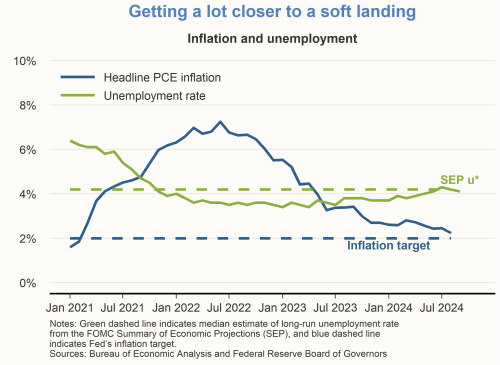
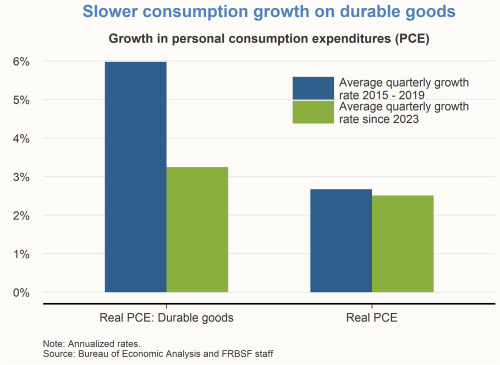
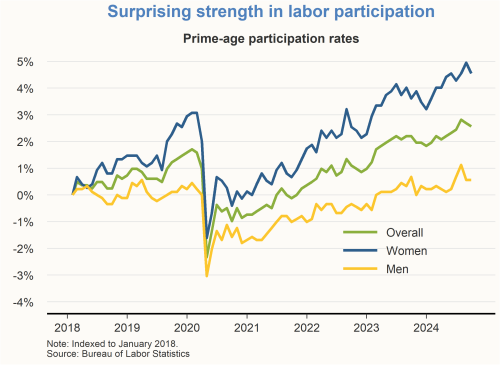
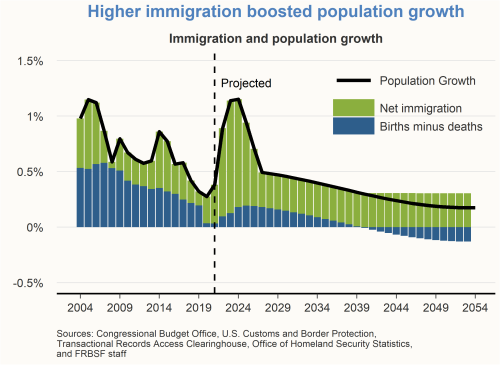
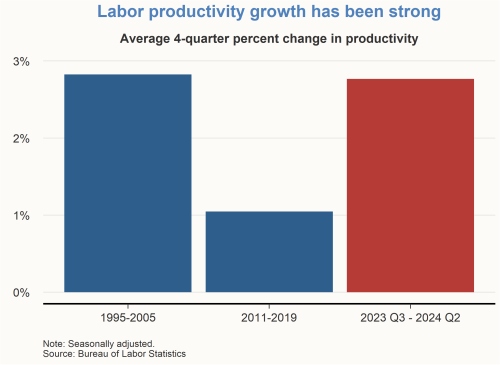
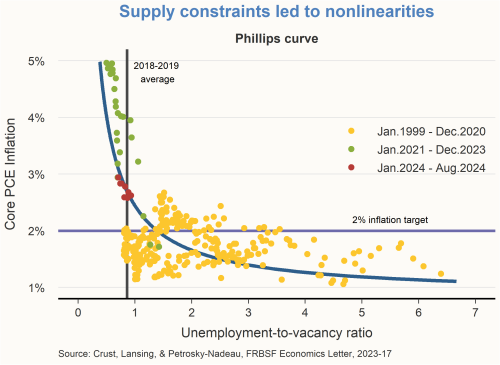
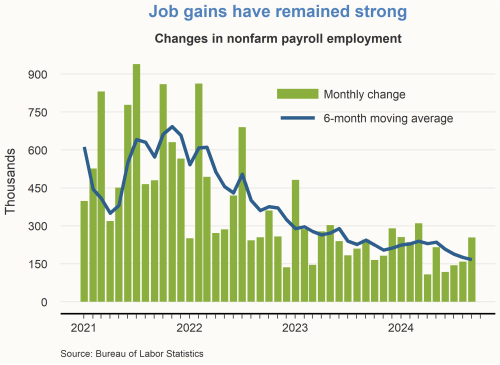
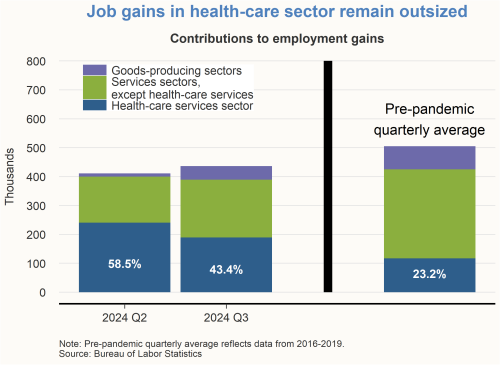
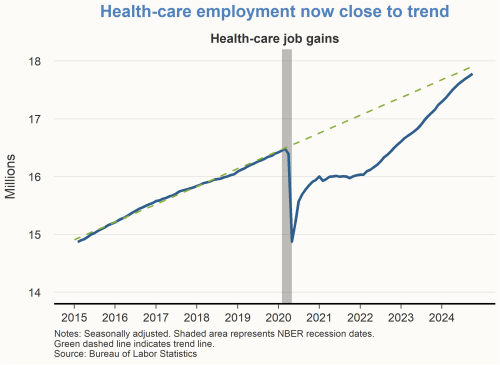
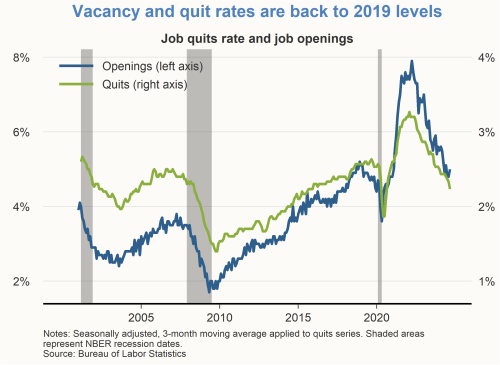
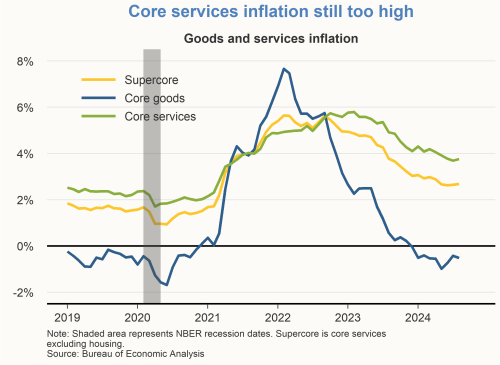
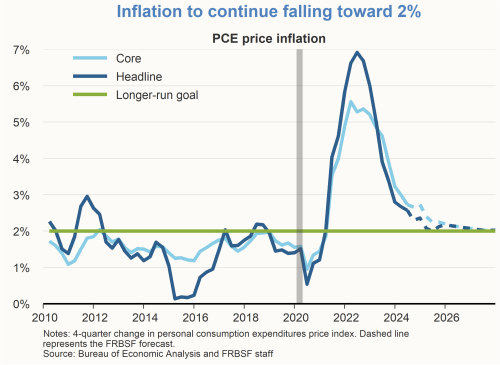
About the Author
Sylvain Leduc is executive vice president and director of Economic Research at the Federal Reserve Bank of San Francisco. Learn more about Sylvain Leduc
The views expressed are those of the author, with input from the forecasting staff of the Federal Reserve Bank of San Francisco. They are not intended to represent the views of others within the Bank or within the Federal Reserve System. This publication is edited by Kevin J. Lansing and Karen Barnes. FedViews appears eight times a year, generally around the middle of the month. Please send editorial comments to Research Library.

